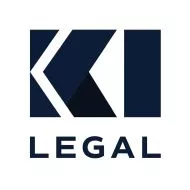Real estate transactions in New York are subject to a complex web of laws and regulations that govern the creation and enforcement of property liens, mortgage instruments, and related financial agreements. Understanding these legal provisions is essential for lenders, borrowers, and all parties involved in real estate deals in the state.
In New York, although deeds of trust are permitted by law, a mortgage is the most common instrument used to create a lien on real property. However, according to N.Y. RPAPL § 1371(2), restrictions are placed on the lender's ability to pursue a post-foreclosure deficiency judgment against the borrower and guarantors. These restrictions necessitate that either (i) the court determines the fair market value of the mortgaged property at the time of the mortgage foreclosure sale, or (ii) a credit - equivalent to the greater of the court-determined fair market value or the sale price at the foreclosure auction - must be applied to the debt.
In the realm of usury ceilings, the general cap is set at 16% per annum. However, several exceptions exist, including:
- Loans to corporate borrowers (excluding those formed for one- or two-family residences),
- Loans exceeding $250,000 (unless primarily secured by a mortgage on one- or two-family residences),
- Federally preempted first residential mortgage loans granted by federally regulated lenders, and
- Junior mortgage loans from New York State-chartered banks, trust companies, or mortgage brokers (N.Y. Gen. Oblig. Law § 5-521, N.Y. Gen. Oblig. Law § 5-501(6)(a), N.Y. Banking Law § 14-a(7), N.Y. Banking Law §§ 103(4-a) and 590-a(1)).
With that said, mechanics' liens in New York can potentially supersede a lender's recorded lien, particularly if the mortgage lacks the specific trust fund covenant required by law. Maintaining lien priority necessitates strict adherence to filing and title search protocols, monitoring of unpaid taxes and municipal charges, and ensuring the inclusion of required covenants in the mortgage.
According to N.Y. Lien Law § 13, a previously filed lien for real property improvement takes precedence over (i) unrecorded conveyances, mortgages, or judgments, (ii) advances on mortgages or encumbrances after the lien filing, (iii) claims from non-contributing creditors, and (iv) unrelated attachments or money judgments. Additionally, a mechanic's lien gains priority over an interest acquired by a deed, mortgage, or similar instrument if it was recorded after work or material provision - unless the instrument includes the statutory trust language specified in N.Y. Lien Law § 13(1) to (5). This trust language, mandatory in any deed, mortgage, or similar instrument creating a property interest, can be included by stating, "subject to the trust fund provisions of section thirteen of the lien law."
To mitigate the risk of mechanics' liens related to pre-conveyance work, parties acquiring property interests are advised to conduct a title search to confirm the absence of previously filed liens. Contractors, subcontractors, or material suppliers working on real property improvement in New York have the flexibility to file a lien at any time during work progress. For properties with single-family dwellings, the filing window extends within four (4) months after completing work, while for other property types it extends within eight (8) months. Notice to the property owner must be given within five (5) days before or thirty (30) days after filing the lien (N.Y. Lien Law § 11).
The content of this article is intended to provide a general guide to the subject matter. Specialist advice should be sought about your specific circumstances.


